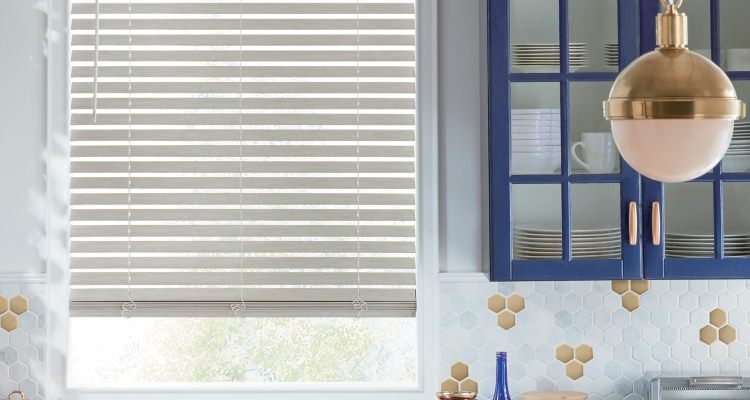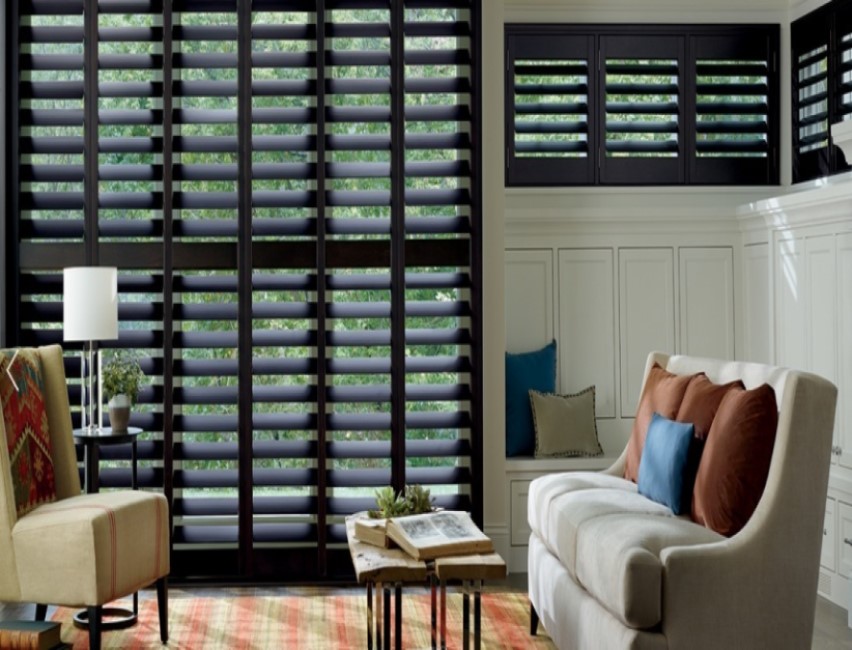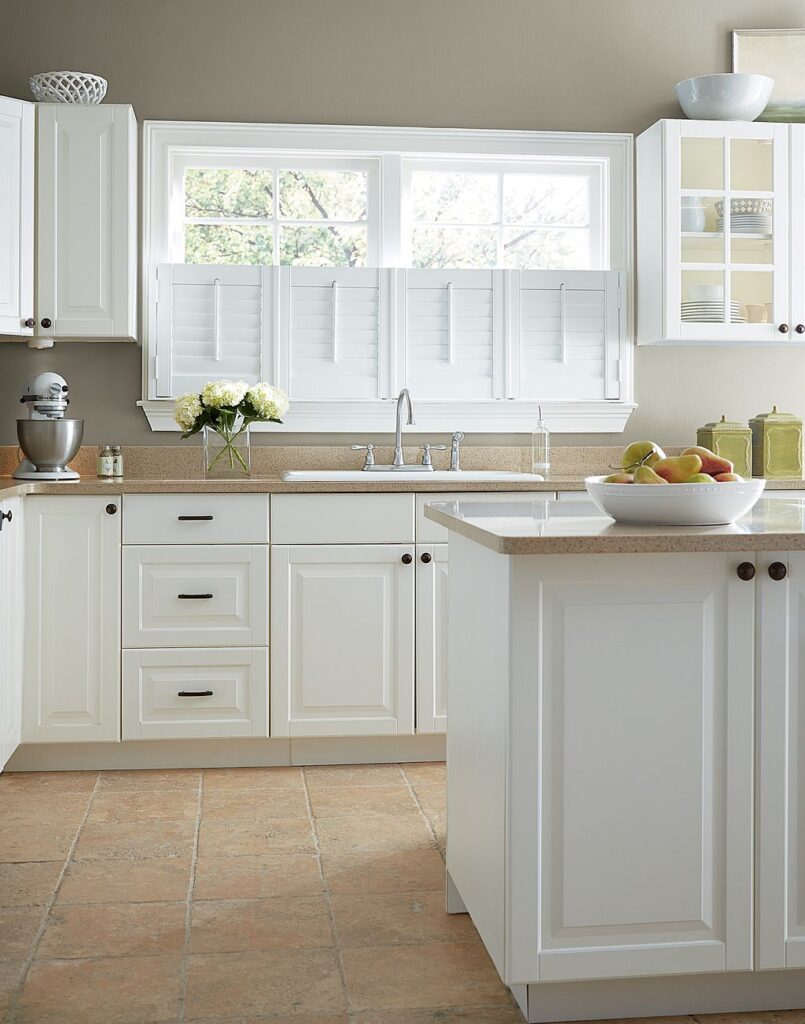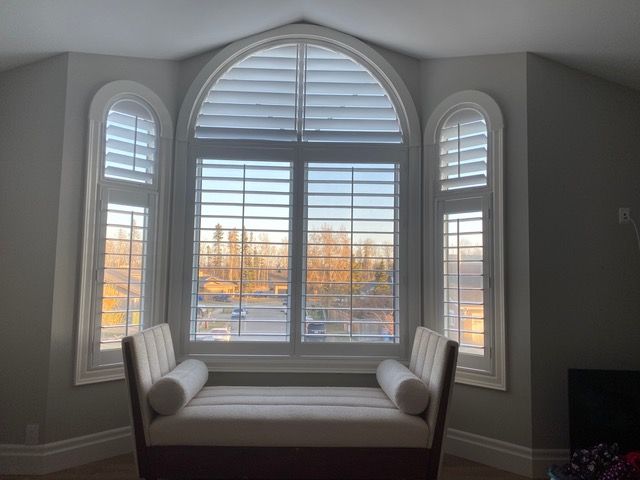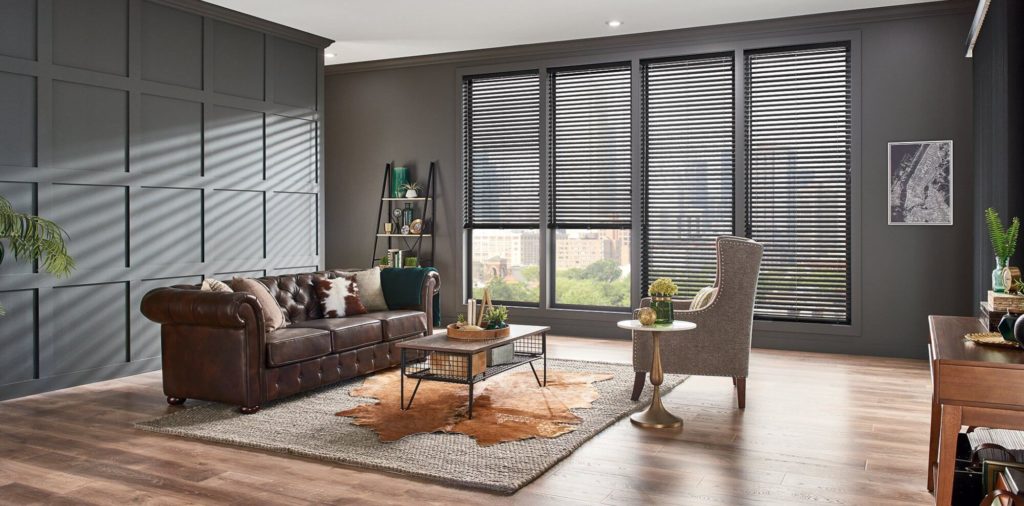Graham’s knows that the choice between shutters vs blinds can be complicated. In this guide, you’ll get the following advice to help you make the best decision:
1. Shutters vs Blinds: The Differences
2. Shutters vs. Blinds: The Pros and Cons
3. Shutters vs Blinds: Types & Materials
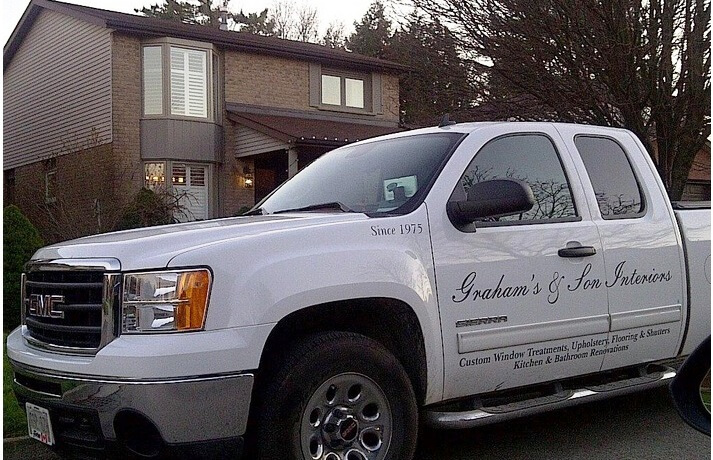
Graham's specializes in custom window treatments and they can even help you settle your shutters vs blinds debate.
Shutters Vs Blinds
1. Shutters vs Blinds: The Differences
While shutters and blinds are similar, there are a few differences. Let’s look at what each is first.
Shutters
Shutters can come either as a solid or a slatted window covering. If they are solid, the shutters look like panels or boards, if they are slatted, they look like blinds. However, the slats are called louvres. Louvres can be adjusted like blinds to let different amounts of light in.
Blinds
Blinds are horizontal or vertical slats that can be adjusted to allow different amounts of light in. They may be drawn open completely, either by moving the slats up to the top of the window or to the sides of the window.
The main difference between shutters and blinds is the way they are fitted to a window. Blinds are usually attached to the top of a window while shutters are fixed to the sides of the windows. Shutters are used both on the inside and outside of windows.
Fun Fact: people living in countries prone to hurricanes often attach hurricane or storm shutters to the outside of their windows so they can help protect their homes.
2. Shutters vs. Blinds: The Pros and Cons
Shutters
Pros:
- Add greater value to your home than blinds
- Made from solid and durable materials (usually wood or faux wood)
- No cords which can be a hazard to children
- Easy to Clean
Cons:
- More expensive than blinds
- Fixed structure makes it less versatile
Blinds
Pros:
- Generally less expensive than shutters
- Blinds come in a wide variety of materials and sizes
- Easy to clean
Cons:
- Can be damaged and bent more easily than shutters
- Adds less value to your home
- Cords are a part of standard blind sets which can become a safety concern. However, you can now get motorized blinds without the cords from brands like Hunter Douglas or Graber.
3. Shutters vs Blinds: Types & Materials
Types of Shutters
For the purpose of this article, we will focus on interior shutters. The two main shutters people purchase for their homes are Plantation Shutters and California Shutters. You can also order Specialty Shutters.
Plantation Shutters
As mentioned, these shutters have larger louvres. They can come with 3 1/2″ louvres or even 4 1/2″ louvres. Plantation shutters are ideal for larger windows and rooms and are quite visually stunning. Plus, when these louvres are opened, you get a better view of the outdoors.
California Shutters
These shutters are given the name “California” because their louvres (the horizontal slats) are 2 1/2″. They are smaller than Plantation shutters which makes them ideal for smaller windows and rooms.
Specialty Shutters
Specialty shutters are simply shutters that are designed to fit uniquely shaped windows. You can get shutters for eyebrow windows, arched windows or circular windows. Plus, you can order shutters for larger buildings with louvres of 6 1/2″, 8″ and 10″ sizes. There are many possibilities.
Take a look at our other blog post on shutters and talk to a consultant from Graham’s to learn more.
Shutter Materials
Many people prefer the look and quality of real wood shutters, however, some people choose faux or composite wood or even vinyl shutters that appear to be real wood. The nice thing about composite and vinyl shutters is that they have been specifically designed to resist moisture damage, sun damage and other wear.
Types of Blinds
Blinds come in many shapes and sizes, but let’s begin by considering the 2 main types: horizontal blinds and vertical blinds.
Horizontal Blinds
Horizontal blinds can come with small or large slats and fit almost any size window; however, they are ideal for smaller windows since they may be tricky to function if they are too large, long or wide.
Vertical Blinds
Vertical blinds are ideal for larger windows and patio or sliding doors. Like horizontal blinds, you can choose small or large slats. You can even choose panel blinds, which are large panels of fabric that function like your typical blinds
Blind Materials
Blinds are so versatile because they come in a variety of materials:
- Wood
- Faux Wood
- Composite Materials
- Vinyl
- Metal
- Fabric
With a variety of materials comes a variety of colours and patterns. You can choose blinds with a simple neutral colour or unique and trendy patterns.
4. Shutters vs Blinds: What is best for you?
When it comes to shutters vs blinds, it’s really based on your personal preferences, your budget and your needs. If you want something more economical, you’ll want to stick with blinds. But that doesn’t mean you have to sacrifice style. You can get creative and choose a nice fabric or spend a little more and get blinds that look like real wood.
If you want to invest in your home’s interior and budget is no concern, then you may want to consider shutters. Their classic look hasn’t gone out of style; it’s really only the colours and finishes that factor into their popularity.
The choice is up to you – you can even mix and match. Spend some more on shutters in one room and save with blinds in another room. Also, if you need help with the choices, get advice from a trusted Graham’s consultant. They will help you narrow down what your needs actually are, what the current prices are, and what options will suit your preferences. Afterwards, you start your selection and have fun decorating!
5. Shutters vs Blinds : How Graham's & Son Can Help
With decades of experience, Graham’s can offer you sound advice. As a friendly and locally-owned business, they care about quality – quality service and quality window coverings. They will understand your needs, take care of all measurements and installations, and most importantly, they will ensure you are satisfied with the end results. Contact Graham’s for expert service.



